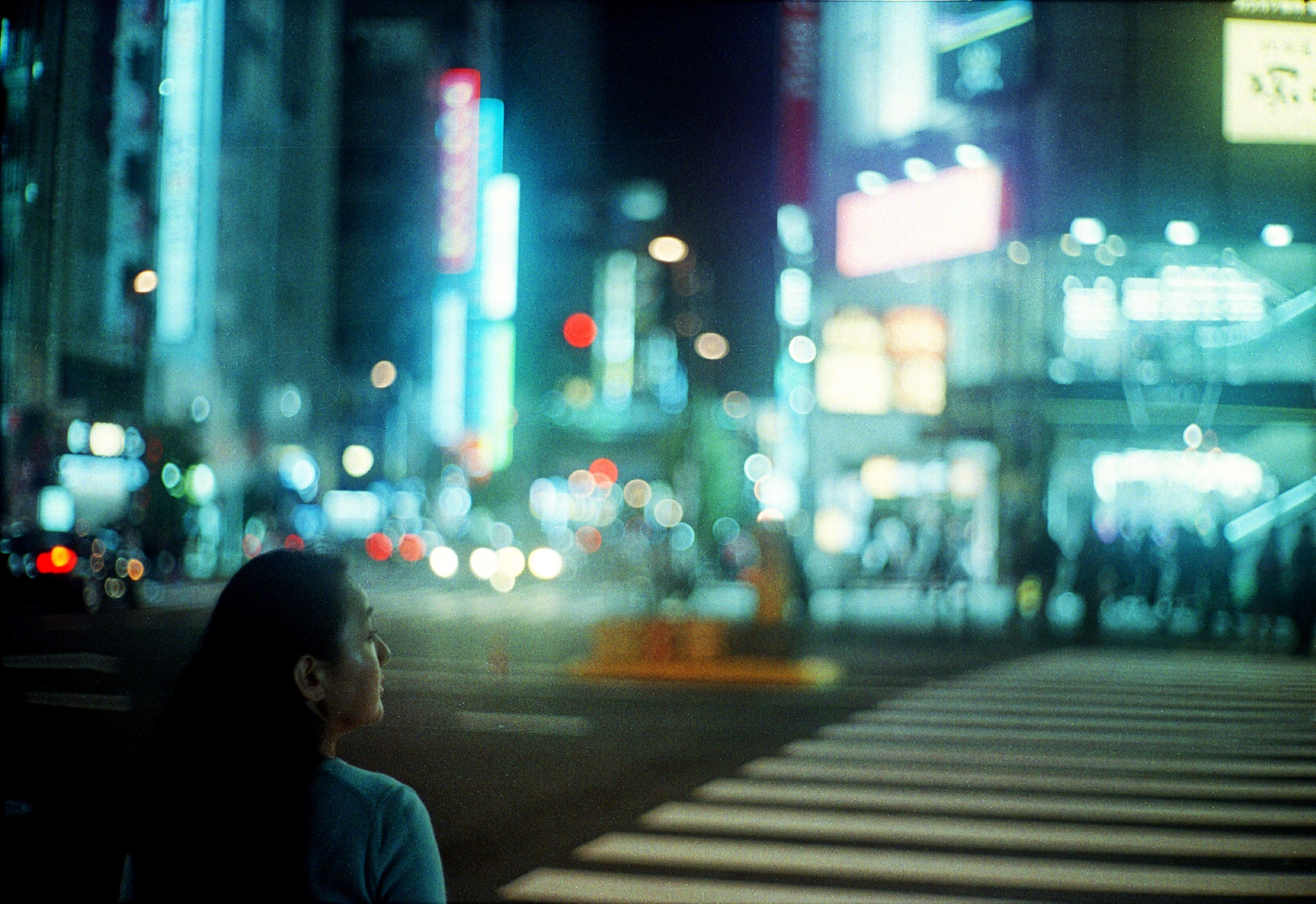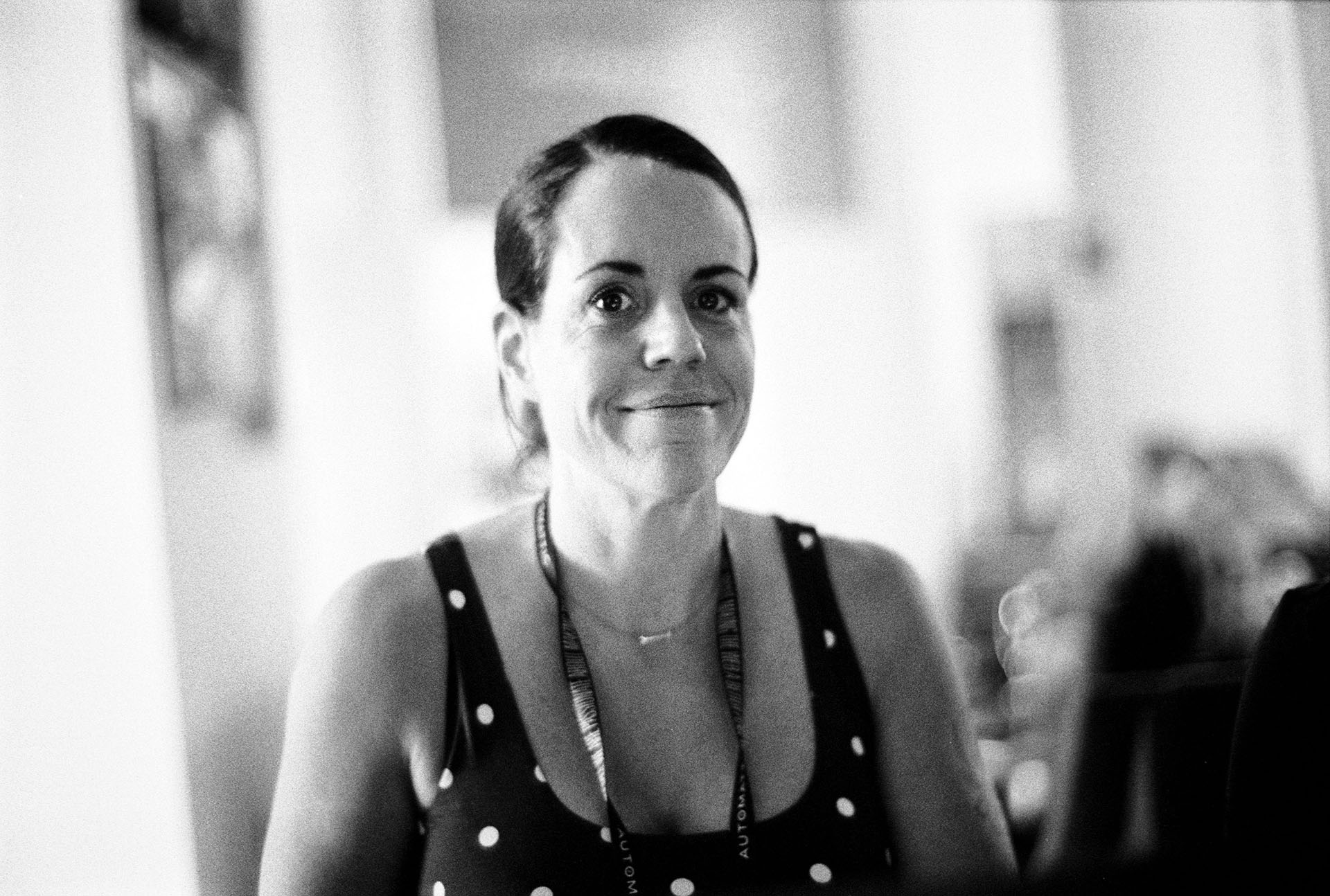The Canon 50mm f1.2 LTM is a short, fast lens from the 1950s that is available in the M39 Leica Thread Mount (LTM). It is rangefinder coupled, and so can be used on camera bodies such as the Canon 7, or the Leica M series with an appropriate adaptor. Of course, it can always be used in full manual mode on a mirrorless camera like the Sony A7 as well. In terms of a comparison, the lens sits between its close relatives the 50mm f1.4 LTM, and the monstrous Canon 50mm f0.95 ‘dream lens’. If you’re interested in how the f1.2 and f0.95 compare, I’ve written about the two previously, here.
The 50mm f1.2 is a beautiful, sturdy lens with a relatively large front element, as well as a particularly pleasing black and chrome finish. It is ‘fat’ in the sense that it spreads outwards in width rather than in length – something that I personally think is a much more flattering shape on a rangefinder body than the traditional elongated style. It is one of my all time favourite lenses, and I’ve now had four copies (!). I sold my first once I got the 50mm f0.95; accidentally smashed the second one during an unfortunate incident where I fell over in the street somewhere in Colorado; sold the third as it had some scratches on the rear element; and picked up a fourth in ‘mint’ condition in Japan.
The 50mm f1.2 is usually found in a fetching black and silver get-up, but there was apparently an all black version produced in limited numbers to match all black rangefinders. I have personally never come across one of these in the wild.
Feature Spec
- Filter thread size: Unlike some of the other Canon RF lenses, the 50mm f1.2 has a fairly standard 55mm thread, which means that filters shouldn’t be too difficult to find.
- Mount: M39/LTM – screw mount. This is a rangefinder coupled lens that will work with old Leica/Canon cameras no problem, but will obviously need an appropriate adaptor for use with more modern bodies – M mount, Sony A7, etc. Be aware that you will need a good quality adaptor to make sure the rangefinder aligns properly.
- Minimum focus: In common with many rangefinder lenses of its kind, the minimum focus distance is a relatively lengthy 1m. While this is annoying with a 35mm lens, on the 50mm f1.2 it is balanced out a bit by the longer focal length.
Performance
If you get a good copy of the 50mm f1.2, it is a pleasure to use. They are compact, solid, and capable of producing some beautiful results. The bokeh in particular looks great, and has a real character to it – similar to the other Canon 50s from that time. In many ways it shares a lot of what makes its bigger cousin – the infamous 50mm f0.95.
Sharpness
Talking about sharpness in relation to a fast rangefinder lens like this seems almost redundant, but since so many people online seem to like to say that the 50mm f1.2 is ‘soft wide open’, I feel compelled to bring it up, and repeat the same old stuff about how shallow depth of field and bad focussing doesn’t mean that the lens is any less sharp than any other. If you shoot the 50mm f1.2 on a Sony A7 – which allows for much more precise focussing than a rangefinder – you will see how sharp it can be.
So enough of this nonsense about the 50mm f1.2 being soft please. If you are getting the focus bang on and things aren’t sharp, then it’s far more likely to be a result of some other issue – like the dreaded haze…
Things to watch out for:
- Distance scale: The distance scale on the lens is either marked with metres or feet. I have seen both versions pop up in Japan fairly equally, so I am not sure of the history there – just be aware that of the difference. I prefer the one with metres to help pre-focus, as I am a metric scumbag.
- Sticky focus ring: As with many lenses of this vintage, some of these may have stiff focus rings due to the grease hardening up over time. This doesn’t seem to be as big an issue with the 50mm f1.2 as it is with the f0.95 and other rangefinder lenses of a similar ilk, but is still worth keeping an eye out for.
- Adaptors and rangefinder alignment: As with all screw mount rangefinder lenses, if you want to use them on an M-mount body, you will need an adaptor. However, the adaptor can throw off the rangefinder alignment, so that the focus will be slightly off. This is a bigger deal when it comes to fast lenses, as shooting at f1.2 and getting the focus exactly right can be very difficult if the alignment isn’t spot on. This can apparently be partially remedied with a good quality adaptor.
Functionally speaking, there isn’t much else to to watch out for with these lenses, as they work pretty much as you would expect. However… there seem to be a large number on the second hand market with issues like bad rangefinder alignment, fungus, and haze – so you’ll want to bear that in mind if you’re looking for one. Be aware that even those described as ‘NEAR MINT’ or ‘EXCELLENT+++’ from Japan also often have ‘micro scratches from use’ or ‘some fog’ which can actually be a bigger issue than it might first appear. I even saw one described as ‘mint’ which reportedly had haze around the edges. The lesson here is… check the descriptions carefully!
Pretty much every single one of these lenses I’ve had has had problems. The first had fungus etched into the glass. The second always seemed soft, no matter how spot on I thought I had got the focus… and my third had cleaning marks and which resulted in a ‘blooming’ effect on the highlights which was really annoying. Ironically… the version of mine that seemed to have the best performance was also the one with the glass in the worst shape, so there’s not always a guaranteed correlation. I finally stumped up a bit of extra cash to get one with spotless glass, and I am glad I did – as the difference is noticeable.
When it comes to haze, this is apparently caused by the lubricant used degrading inside some of these lenses over time, requiring you to clean the rear element. The mint condition version I got hazed up after a few months, so I took it apart myself to clean. If you have a lens spanner it isn’t too difficult to do – have a Google and you’ll find plenty of tutorials.
Price and availability
While the 50mm f1.2 isn’t rare, there also aren’t a huge amount of these lenses kicking about the second hand market in great condition – at least not on the lower end of the price scale… especially not outside of Japan. That said, if you’re willing to pay a bit more (or risk customs fees) you should be able to pick one up without too much trouble. Price wise, expect these to go in the region of £400-500 for one in good nick. You can get them cheaper than this, but from experience the quality can vary a lot. If you aren’t feeling flush, consider the 50mm f1.4 as an alternative.
My Experience
Much like the rest of the Canon rangefinder lenses, I really like the 50mm f1.2. It is solid, focusses quickly, lets you shoot in extremely low light, and has a lot of character. Getting a good copy can be tricky, and I’ve gone through a fair bit of drama to find one… but I think it was worth it in the end. On film, the 50 f1.2 performs especially well, and overall is simply just a pleasure to use. It’s one lens I will never sell.
Images
Below are a bunch of different pictures, shot with the different lenses I have had – with all of their various flaws.
The following were shot with the Canon 50mm f1.2 on a Leica M Typ 240:
The following were shot with the Canon 50mm f1.2 on a Leica M6, and Fuji Neopan 1600:
The following were shot with the Canon 50mm f1.2 on a Leica M2, and Fuji Natura 1600:
The following were shot with the Canon 50mm f1.2 on a Leica M2, and Fuji Neopan 1600:
The following were shot with the Canon 50mm f1.2 on a Leica M2, and Cinestill 800T film:
The following were shot with the Canon 50mm f1.2 on a Canon 7, and Kodak TriX:
—-
Disclaimer: As usual, this article isn’t intended to be a comprehensive, pixel-peeping review. Rather, it’s highly subjective, and reflects my research and experience as someone who has shot with a lot of different cameras and lenses over the years. No aperture comparison charts here.











































great stuff!
Nice pictures, makes me miss mine, one of the shortest 50mm lenses around. I had multiple copies as well and I almost managed to have a mint made out of two copies, but I got unlucky with the timing.
Well, at least I found a pretty minty 50/1.4 LTM with a Canon 7sZ, that works very well for the time being.
“Third time was the charm”- picked up a very early Canon 50/1.2 with mint glass. Agree with your assessment- the “bum rap” this lens gets is often from damaged glass. One note: although it does take common 55mm filters, those made for this lens have the glass all the way up front. A clamp-on vented hood fit over the lens and special filter. Easy solution- use a 55->58 step up ring. You could also get a thin 55mm filter and remove the glass, use it as a spacer. I learned this on my first copy of the lens. The new one- came with the special filter, and I made a clamp-on hood out of an Olympus 55mm hood for a zoom, took off the rubber hood, epoxied a 58mm vented hood onto it. Works, total cost $10.
Smart! I’m not 100% sure what you mean about the filters though. I just use regular 55mm ones. Is there an overlap?
If there was, you probably would have noticed it by now.
With a small droplet of water to the centre of the filter, it is easy to test if it rubs against the front glass.
Oh! I understand now. Yeah, I haven’t notices any connection, but I’m going to go check now…
I have had two LTM Canon 50mm 1,2 lenses. Both were sharp, but the other had issues with precise focusing. Rather than fiddling with the adapter, I had it perfectly tuned in a collomator and then verified in a M digital body.
When looking how the elements reflect light, I suspect one of the elements are ASPHERIC without Canon btelling it. To me, the performance, full opening, is really good.
Impressive! I don’t know any place here that would be able to do that kind of measurement and calibration effectively unfortunately. There is only one place, perhaps – but it is sadly outside of my knowledge range. Glad you got them working! They are awesome lenses.